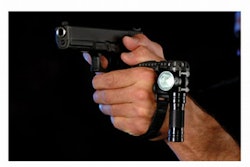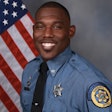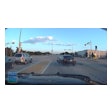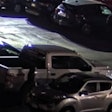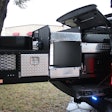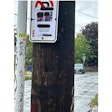More than 50 times each year, a participant or spectator dies as the result of an accident that occurs during an informally organized street race.
America has had a long love affair with street racing. That love has been reflected in and magnified by popular culture. In the ’50s and ’70s, Hollywood romanticized the activity in movies like “Rebel Without a Cause” and “American Graffiti.” The current surge in street racing can be traced to five years ago when “The Fast and the Furious” hit the screens with its spectacular race scenes.
Today, street racing is a problem in almost every American community, as technology such as the Internet and text messaging have made it easy to stage underground races for substantial audiences.
A Quarter Mile of Problems
Every weekend, in thousands of communities across the United States, street races are organized with different levels of sophistication. Some illegal races involve a loosely affiliated group of youths hanging around an abandoned area of town. Other street races are elaborate events complete with flaggers, timekeepers, lookouts, and scores of spectators. In fact, the level of sophistication can often be judged by how well equipped the lookouts are; some of the more complex events will arm the lookouts with police scanners and two-way radios.
These races usually take place in a remote area, primarily in industrial areas. A course is marked out to a distance of between one-eighth and one-quarter of a mile. The racers take their mark, a starter drops his arms, and the race is on.
Street races are exciting for all involved. Even the spectators get a thrill because they are witnessing something illegal, informal, and dangerous. This builds a sense of community among street racers and spectators. Unfortunately, it is a community in which even the spectators are at risk.
Street racers are not professional drivers and have never been formally trained. There is no chance for them to practice. They rely on their limited experience at high speeds and their adrenaline to get them through the race. Also, their vehicles have been modified beyond the manufacturers’ standards and engineering specs. The result of a racer pushing the capabilities of his or her vehicle can be a blown engine or a ton of sheet metal hurtling out of control into a crowd.
And the crowd is often way too close to the marked course of the race and not behind any protective barriers. Consequently, vehicle crashes at street races cause injuries to drivers, passengers, spectators, and even innocent bystanders.
This criminal activity also has other effects that are less publicized. Public streets are marred by burning rubber of the vehicles’ tires and excessive wear and tear. The crowd that congregates creates noise issues and leaves behind a trail of vandalism and litter.
Ask the Right Questions
Any proactive patrol officer should be able to locate the illegal street racing in his or her jurisdiction.
The involved parties (participants and spectators) are likely to be both male and female between 17 and 25 years old. Information about local street racing can be gained by conducting field inquiries or by debriefing suspects of other crimes in the target age group. Most participants are eager to talk because they are proud of their accomplishments, and they really don’t feel like they are doing anything wrong.
Your first questions should always deal with officer safety. Are the races organized by known (violent) street gangs? How many people attend? Are they armed? Is there often violence among the spectators? Is armed “security” usually on scene to maintain order? Rarely is there a nexus between the street racers and weapons crimes, but you want to make certain of what situation you and your fellow officers will encounter when you shut down an illegal race.
Next you want to find out about the demographic of the participants, including age, ethnicity, etc. Where are the racers from? Are they local or do they come from outside the area? If you are having trouble locating street races in your community, check out www.sromagazine.com, then click on “Racers Hangouts.”
Offering Alternative Venues
Why do these racers race? Is it the thrill of speed? To show off? Because there is nothing else to do? Besides the officer safety questions, these questions are the most important because they will help you and your agency formulate a directed, effective response.
If the racers race for the thrill of speed, a department may want to look into working with a private venue to provide a suitable location for the competitions. Companies selling safety equipment, auto parts stores with high-end equipment, and garages specializing in vehicle modifications are all legitimate community resources that may be (financially) inclined to help police find a legal outlet for the racers’ need for speed. Police can get assistance from national programs dedicated to making street racing safer; these organizations include Racers Against Street Racing and Beat the Heat.
If the participants are street racing because they have nothing else to do, this is a community problem that is manifesting itself as a law enforcement issue. In this case, the street racing problem should be taken over by your agency’s Community Policing Bureau or addressed by the community at large. The onus now falls on the community to create a proper outlet for the time and energy of their youth.
Your final option if the problem persists or grows is zero tolerance. Written enforcement action can be taken for careless driving, reckless driving, and racing on public streets. Non-participants (starters, timers, those who block streets) can be charged with trespassing or obstructing public passage. Applicable curfew laws can be enforced to winnow crowds. And you can deprive the racers of their tracks by getting the local government to install speed bumps on particularly troublesome streets.









